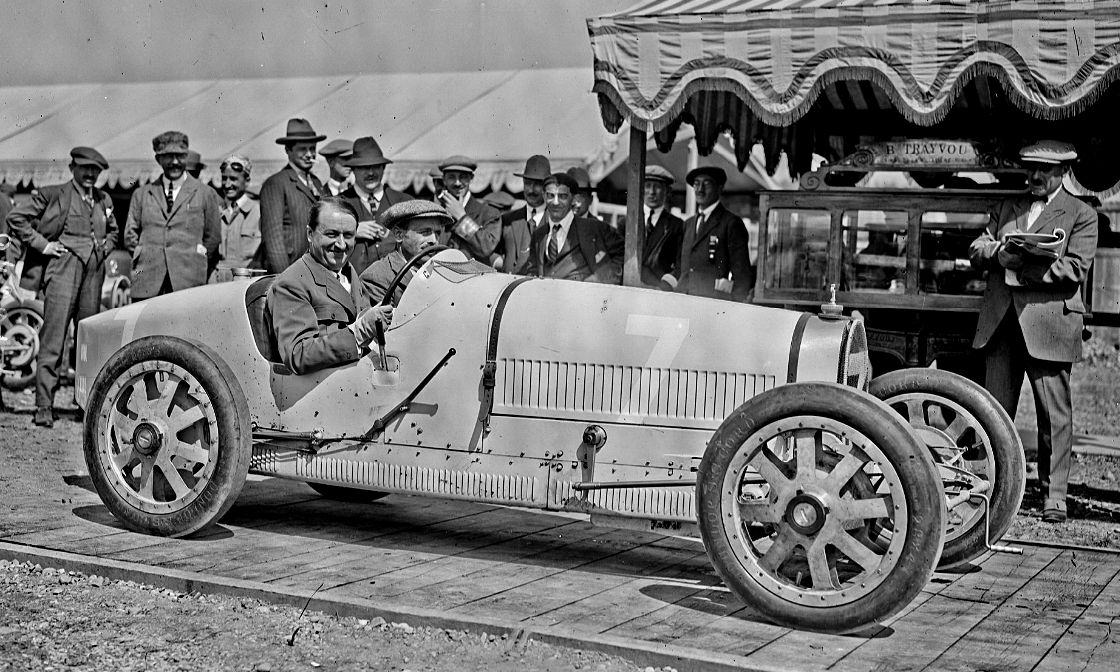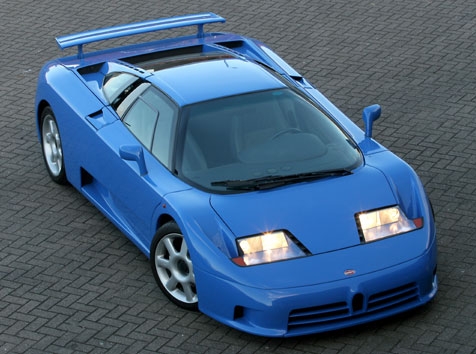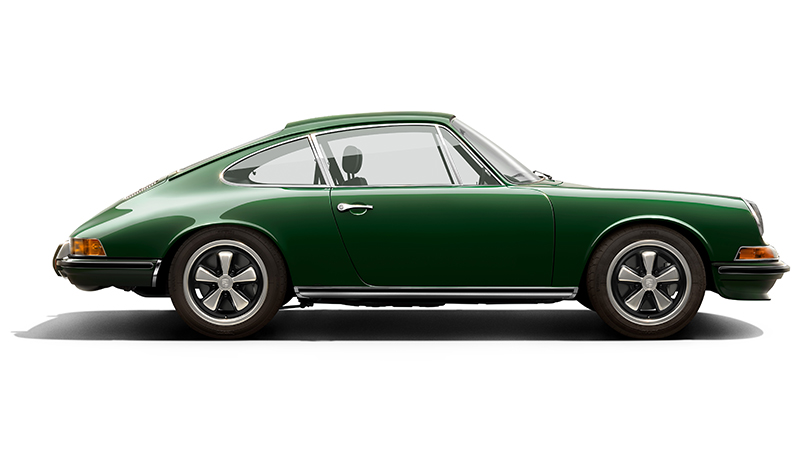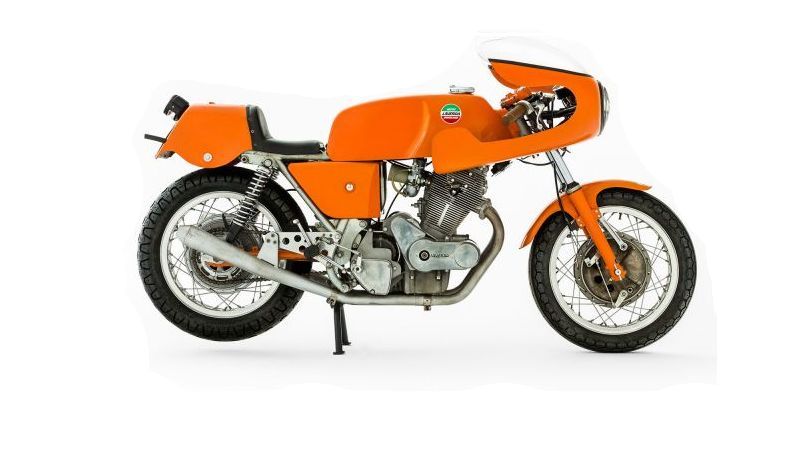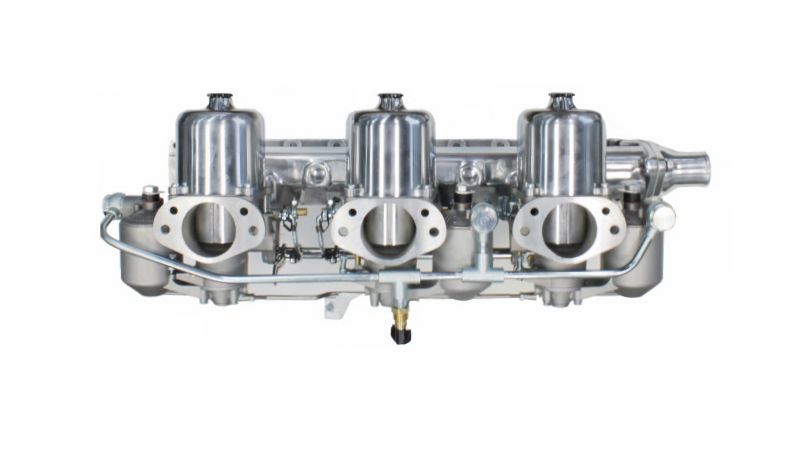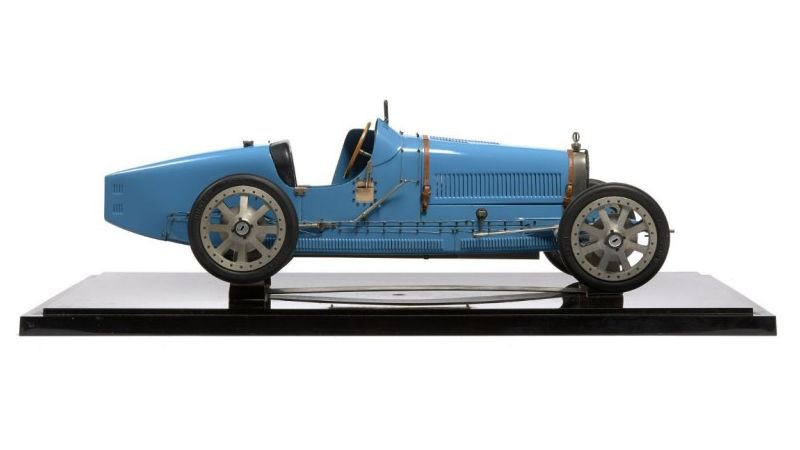Bugatti Motor Cars
example Bugatti successfully Sold
Rien n'est trop beau, rien n'est trop cher
Can the complex combination of nuts, bolts, pipes, wires, rubber, and assorted odd shapes and blocks of metal that form an automobile ever be completely the work of one man? Is it possible for one mind to conceive and execute such an involved machine?
In the arts we find this possible. Men like Michelangelo and Beethoven conceived and wrought their creations by themselves, and the final products reflect the genius and singleness of purpose that is possible when one mind directs a project.
Ettore Bugatti was such a man. He conceived a car as a work of art. To tell the story of the Bugatti cars is to tell the story of their designer, for man and machine share the same history. Bugatti was the son of an artist, and was reared as an artist.
His father Carlo Bugatti worked as a silversmith, sculptor, woodcarver, painter, lapidary and metal engraver. His younger brother, Rembrandt, became a sculptor of animals, and Ettore, born in Milan in 1881, was sent to the Brera Art Academy to study formal sculpture. At the age of seventeen he decided he would be more successful as an engineer and joined the firm of Prinetti & Stucchi as an apprentice.
Within a year Bugatti designed and built a three-wheel car with two engines. This little machine won eight local races out of ten and the rash youngster entered it in the Paris-to-Bordeaux run. The tricycle placed third in the first stage, and young Bugatti returned to Milan, fired with the notion of building cars. He designed a four-engine machine which the firm refused to build, so he quit.
In 1899 the fiery youngster's genius was finally recognized and he was backed financially by the brothers Gulinelli. At the age of nineteen Bugatti produced his first real car. It had a four-cylinder overhead-valve engine, contact battery ignition, chain drive, and a four-speed gearbox. Quite an accomplishment. This car created a sensation all over Europe, and Bugatti received many offers. He moved from contract to contract, building cars, experimenting, and developing a concept of car construction that was unique for its time.
During this period, Bugatti was looking for a place to set up a factory that would be his own. In 1909 he acquired a large piece of property at Molsheim in Alsace. There was a large house and many outbuildings, formerly a dye works. Here he settled down and began his pet project, the production of a small, lightweight racing machine. When this little car appeared at Le Mans in 1911, it looked like a miniature standing near the huge racing cars of the time.
There was a Fiat, a Dietrich, an Excelsior, a Rolland-Pilains, and a huge Cottin & Desgouttes. On the starting line next to them stood the tiny all white Bugatti, four cylinders strong. The riding mechanic cradled the sparetire in his arms, because there was no room for it elsewhere.
The race was run under the broiling sun at a temperature of 100 degrees, and both cars and drivers melted under the strain. While the huge two-ton monsters screamed and slid around the course, Bugatti's driver, Ernest Friderich deftly maneuvered the little 660-pound baby. He came in second, behind the Fiat, and proved that Bugatti knew more about car design than many older engineers. Orders came in and the little factory grew.
With the coming of war in 1914, Ettore Bugatti buried three racing cars under the cellar of his home, gathered his family, and fled to Italy. From there he went to Paris and started designing again. The French government needed aircraft engines, and Bugatti, like Rolls Royce and Mercedes, turned his talents in that direction. He built a straight-eight-cylinder engine, and then a double-eight with two crankshafts geared to the propeller, allowing a machine gun to fire through the hub.
The single-eight was taken to America and produced in Elizabeth, New Jersey, at the rate of twenty a day. In American planes these Bugatti engines powered many air miles. This would seem like standard cooperation between allies, and it was. But it led to an interesting development.
The factory that turned out these engines was managed by the Duesenberg brothers. Within six months of the war's end, a group of Duesenberg cars appeared at Indianapolis. They sported the first straight-eight engines of that type in America. No one claims they were copies of the Bugatti, but no one denies its influence on them.
After the war, Bugatti returned to Molsheim, exhumed the buried racing cars, and resumed production. In 1923 a strange tank-shaped machine sported the Bugatti insignia, one of the few models that did not have the famous horseshoe-shaped radiator shell. This beetle-bodied car had two important innovations: aluminum wheels with integral aluminum brake drums and a front axle hollow in the center but solid at the steering pivot where strength is required.
Bugatti remained at Molsheim until World War II, and his establishment became famous, but not only for cars. He lived like a landed baron of the Middle Ages, and was called Le Patron by everyone. The estate contained many buildings, all with polished oaken doors and bronze locks which admitted a single master key. One building was a carriage museum, another a sculpture museum, then a harness shed, and a stable housing thoroughbreds, next a riding school, a kennel with prize wire-haired terriers, a field of cattle, pigeons, rare fowl, and - of all things - a private distillery.
Where were the cars made? In another group of structures, all with the polished doors and bronze locks. They contained immaculately clean pattern shops, body shops, a foundry, and the most advanced machine tools. Finally, there was a large drafting room where Le Patron's drawings and blueprints were made. Many of the workmen lived on the estate, which seemed to strengthen the feudal character of the establishment.
Bugatti designed and ran everything. He was the architect for the buildings; he designed an electric power station; he supervised construction with an iron hand; in short, he was a benevolent dictator. The crowning glory of the Molsheim estate was the Hotel du Pur Sang. Here a customer waiting for a new car or for repairs to an older one might spend a few days in luxurious comfort provided and super vised by the Bugatti family. During the day he could go horseback riding with Le Patron, or watch the machinists turn out the precision parts for the Bugatti cars.
Bugatti enjoyed his baronial life at Molsheim, and the car designs kept flowing from his drawing board, while his son Jean took over the racing management. The racing history of the Bugatti cars needs only the statement of one simple fact. They have won more races than any other car made. This statement stands even though no Bugattis have been produced since the 1940's. The sleek sky-blue cars almost completely dominated the race tracks of the world from 1925 till 1938. They had brute speed for the fast tracks, the lithe cornering ability for the tight courses. In 1925 and 1926 alone, they won over 1,000 races.
Some of the outstanding Bugatti cars were: the 1934 Type 35, a classic design; the Type 51, one of the most beautiful body shapes for its period; the Type 57, and the Type 59, the last of the flashing racing Bugs. Although Ettore Bugatti was known for his racing cars, he always produced a road production model. Some were coupes, some convertibles, some sedans, but all had the flowing, rakish lines that suggested speed. The Type 57 passenger version, built in the 1930's can still do over 130 miles per hour.
In 1929, Bugatti produced the largest car in the world, even by today's standards. It seemed as long as a freight car and cost $30,000 without the body. The buyers would have a body custom-built at perhaps another $10,000. This monster had an eight-cylinder engine with a displacement three times that of a modern Cadillac. Only a few were built when the depression came, and many of the engines found their way into boats and gasoline-powered railroad locomotives.
When World War II struck, Bugatti moved to Paris where he continued designing. Hundreds of ideas flowed from his drawing board, all filed for future development. His apartment became a rendez-vous for the French Resistance movement during the German occupation. Many of his former employees served in underground units, but the most exciting exploit was performed by Robert Benoist, ex-Bugatti race driver, and Bugatti's Paris sales, manager. Perhaps it would be fair to say that the exploit was done by his Type 57 Bugatti.
Benoist was driving the 57 near Le Bourget airport on the way to a meeting of his underground unit. The road was thick with fleeing Parisians, and traffic moved at a slow crawl. Suddenly a German patrol arrived. The road was cleared and a panzer division thundered by on its way to Paris. The 57 was spotted by a German officer, whose sharp eyes then recognized Benoist as a Resistance leader. Under arrest, he was placed in a heavily armed motorcycle convoy that moved slowly to the southwest, stopping only to destroy French fortifications.
Benoist was allowed to drive the Bugatti, which the Germans kept well fueled. On the morning of the second day, the convoy was slowed momentarily by a road block and Benoist noticed a side road a short distance ahead. With the precision that only a racing driver can command, he dropped into first gear, floored the accelerator, and the willing Bugatti shot forward in a classic racing start. At the side road, Benoist whipped the car through the corner as though he were in a Grand Prix race. In seconds, Benoist had the Bugatti rocketing at well over 100 mph. By the time the motorcycles gave chase, he was out of sight.
When the war was over, Bugatti tried to resume his work, but he was greatly weakened by the strain of the occupation and the tragic deaths of his friends and members of his family. In August of 1947, this fiercely individual car designer died.
What is the charm of the Bugatti? It is cantankerous, rough-riding, and makes more noise than the hordes of Hades. No two were ever exactly alike, so replacement parts have to be specially made. each time they are needed. The cars were very often set up to run on racing fuels, and need detuning to operate on the highways. But their owners love them with a fierce passion. Why?
From stripped racing Bug to the handsomely appointed road cars, these machines have a purity of body design and a mechanical precision that is almost unbelievable. The car is as responsive as the thoroughbred "Pur Sang" horses that Ettore Bugatti raised, and even a model dating back to the middle 1930's can outrun and outlast most of today's cars.
We are looking for the following cars. If you do have any of the below listed vehicles - and you are ready to sell - please Contact Us.
| Molsheim |
|---|
| Type 13 |
| Type 22 |
| Type 35 |
| Type 37 |
| Type 41 |
| Type 51 |
| Type 57 |
| Type 110 |
| Campagaliano |
| EB 110 GT |
| EB 110 SS |
| EB 112 |
| Modern |
| Veyron |
| Chiron |
We buy, sell, broker, locate, consign and appraise exceptional classic, sports and collector Bugattis'
Contact us when you are serious about buying a fine Bugatti Motor Car or to arrange a free and confidential valuation with a view to selling.
